Abstract
By using the spheroplast fusion technique as a tool for genetic analysis, we have demonstrated complementation among three of four isoleucine-valine mutants, two of three methionine mutants, and two arginine mutants of independent origin from two different Candida albicans isolates. The two adenine mutants derived from the same parent strain did not complement. Complementation resulted predominantly from heterokaryon formation and, in some cases, from heterozygote formation. In either case, most fusion products were unstable and showed nuclear as well as chromosomal segregation, in a few cases resulting in recombination of parental auxotrophic markers. However, some fusion products were fairly stable.
Full text
PDF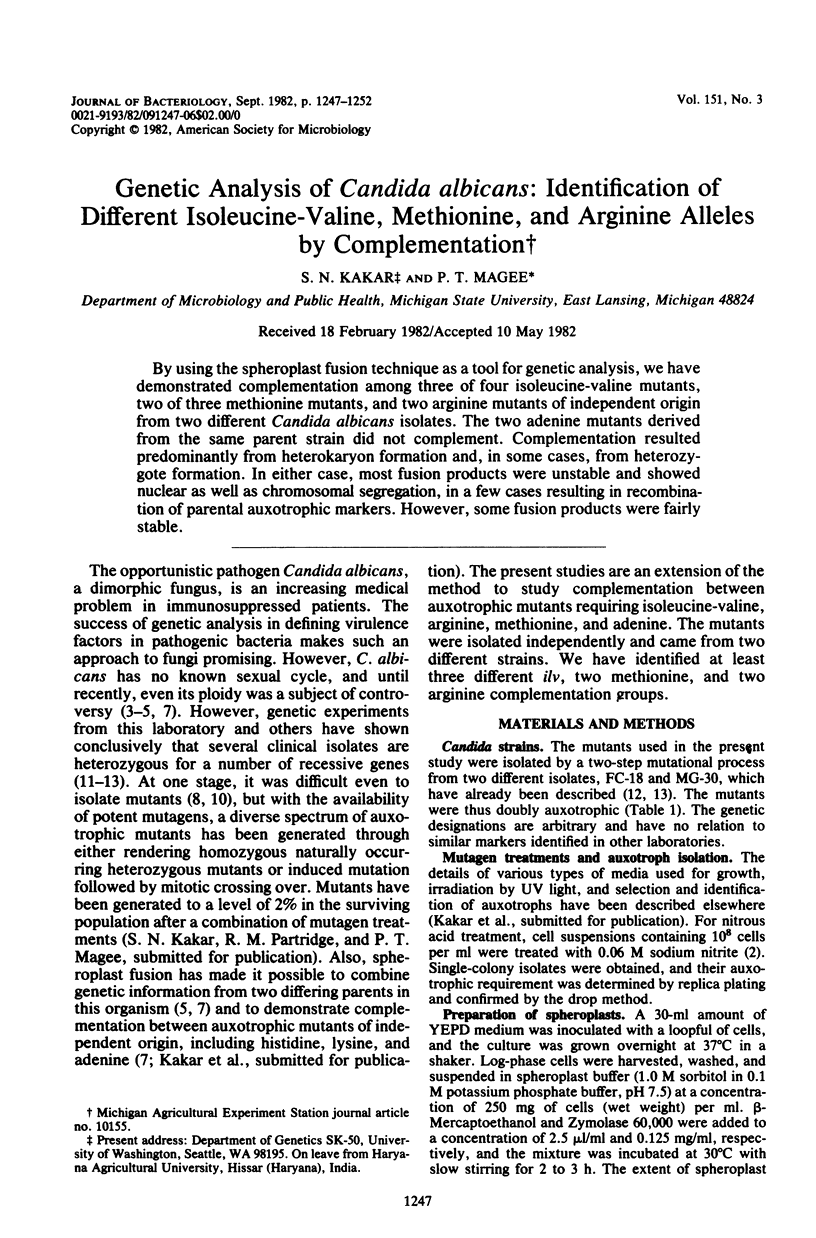
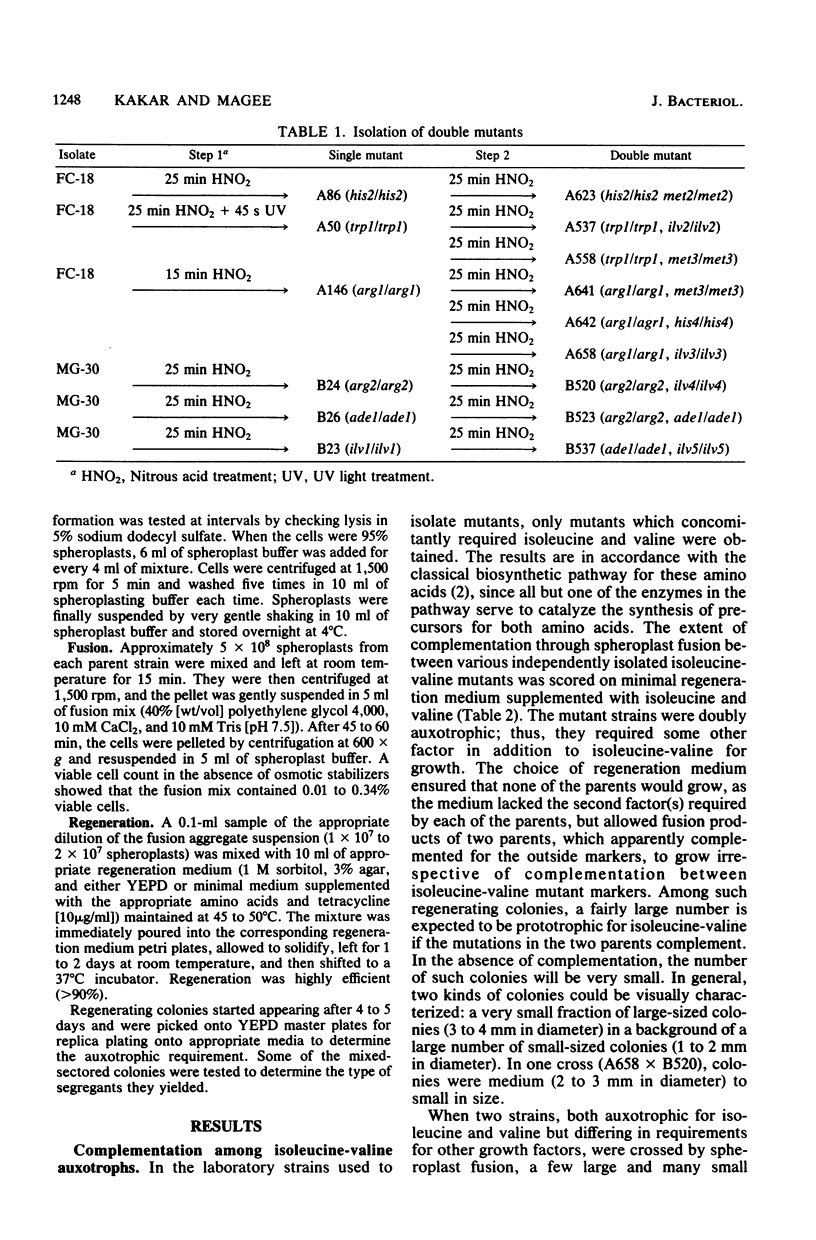
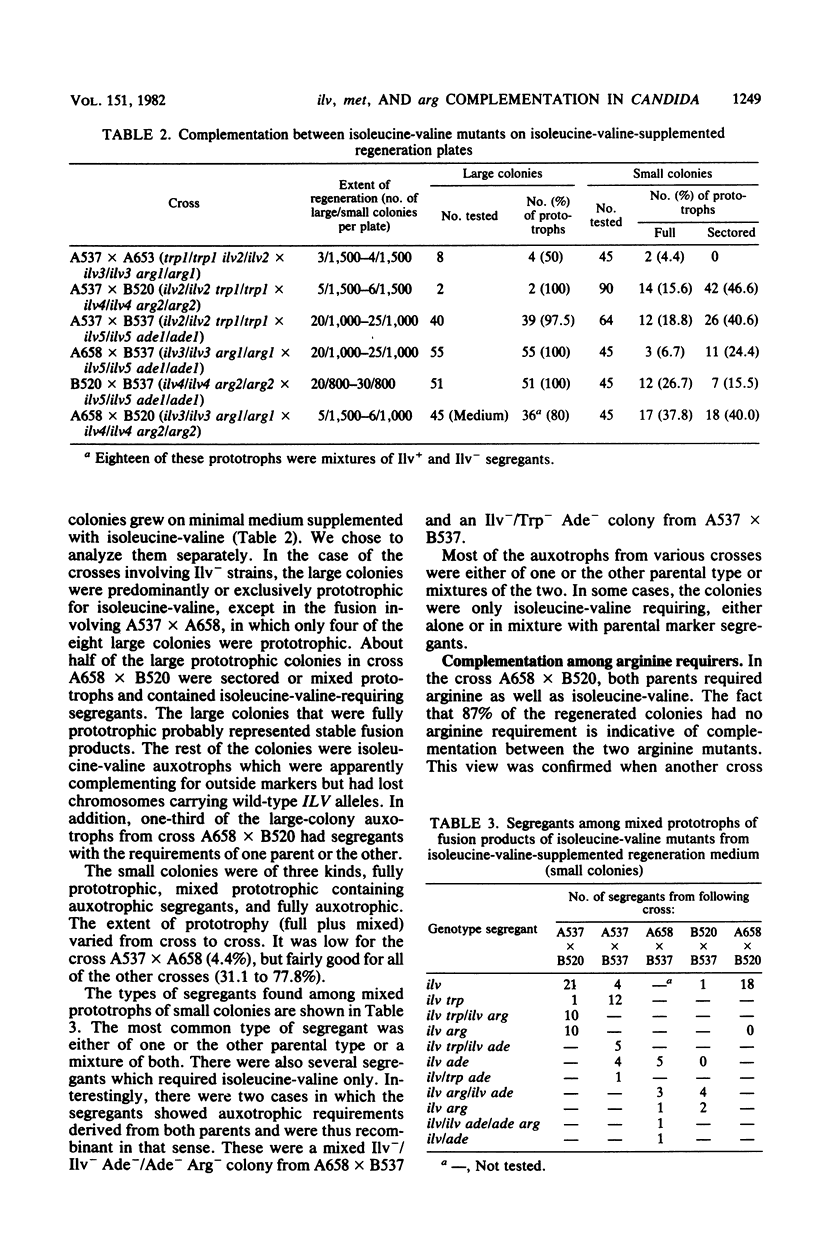
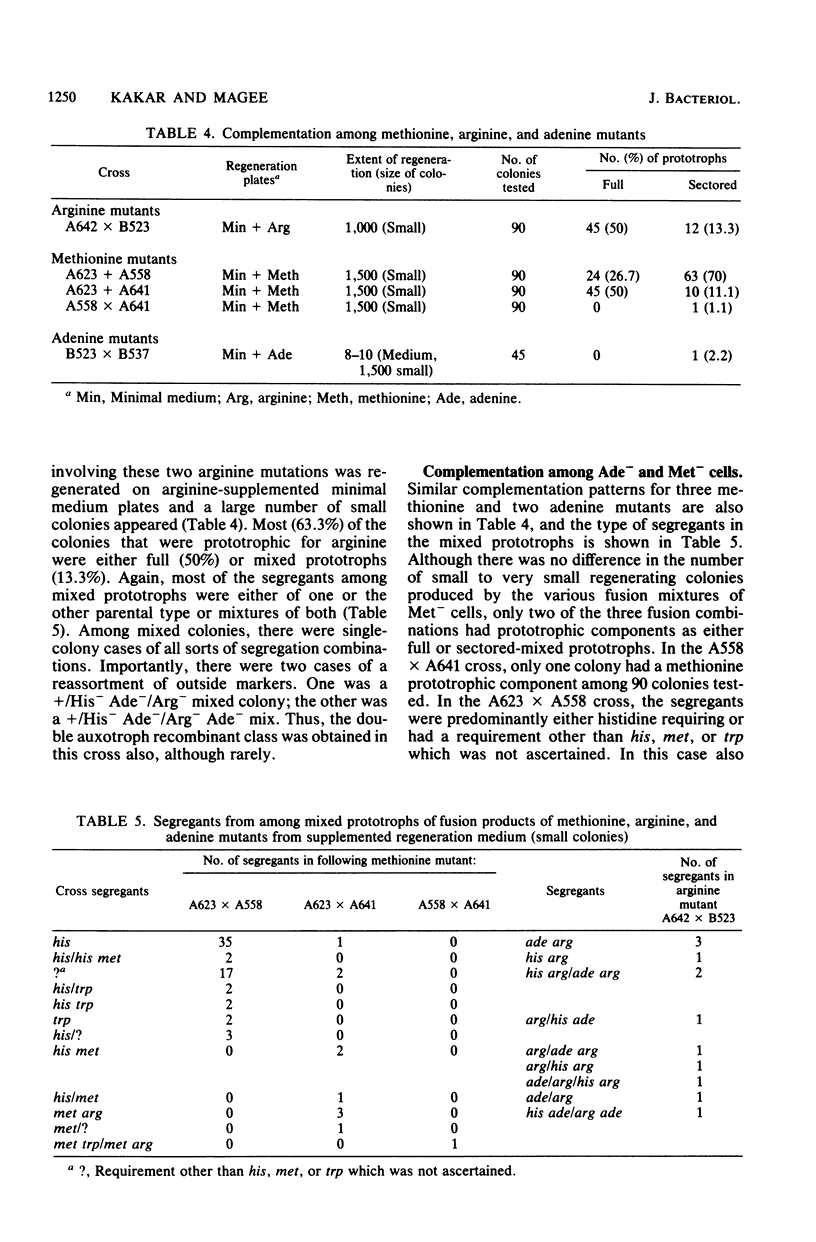
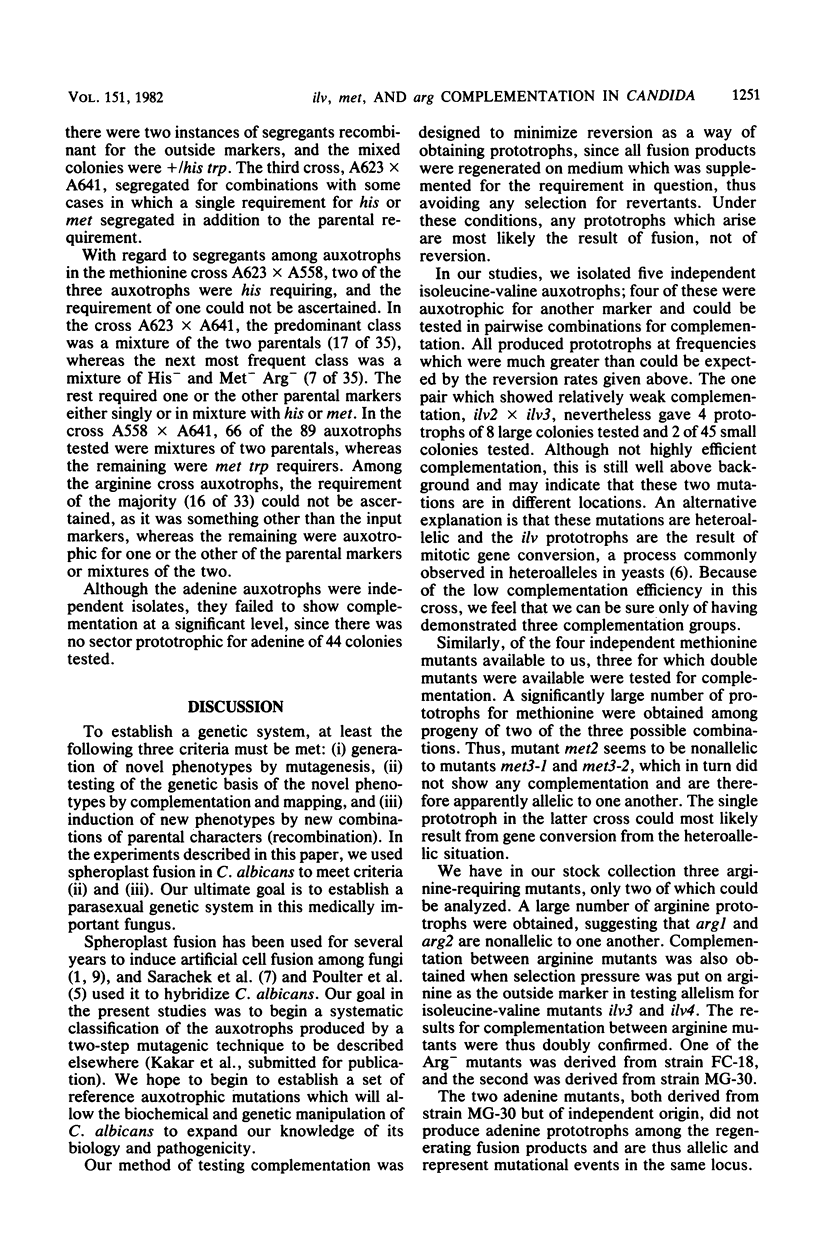
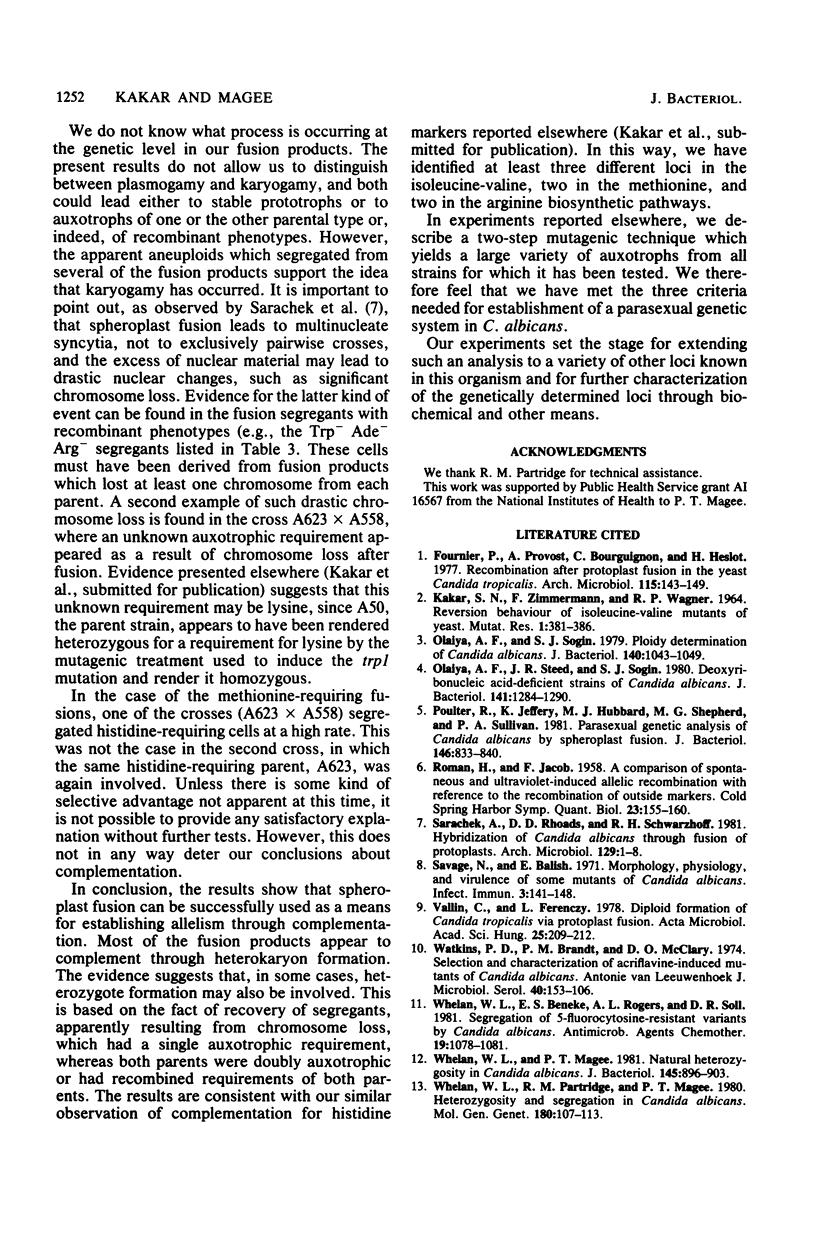
Selected References
These references are in PubMed. This may not be the complete list of references from this article.
- Fournier P., Provost A., Bourguignon C., Heslot H. Recombination after protoplast fusion in the yeast Candida tropicalis. Arch Microbiol. 1977 Nov 18;115(2):143–149. doi: 10.1007/BF00406367. [DOI] [PubMed] [Google Scholar]
- Olaiya A. F., Sogin S. J. Ploidy determination of Canadida albicans. J Bacteriol. 1979 Dec;140(3):1043–1049. doi: 10.1128/jb.140.3.1043-1049.1979. [DOI] [PMC free article] [PubMed] [Google Scholar]
- Olaiya A. F., Steed J. R., Sogin S. J. Deoxyribonucleic acid-deficient strains of Candida albicans. J Bacteriol. 1980 Mar;141(3):1284–1290. doi: 10.1128/jb.141.3.1284-1290.1980. [DOI] [PMC free article] [PubMed] [Google Scholar]
- Poulter R., Jeffery K., Hubbard M. J., Shepherd M. G., Sullivan P. A. Parasexual genetic analysis of Candida albicans by spheroplast fusion. J Bacteriol. 1981 Jun;146(3):833–840. doi: 10.1128/jb.146.3.833-840.1981. [DOI] [PMC free article] [PubMed] [Google Scholar]
- ROMAN H., JACOB F. A comparison of spontaneous and ultraviolet-induced allelic recombination with reference to the recombination of outside markers. Cold Spring Harb Symp Quant Biol. 1958;23:155–160. doi: 10.1101/sqb.1958.023.01.019. [DOI] [PubMed] [Google Scholar]
- Sarachek A., Rhoads D. D., Schwarzhoff R. H. Hybridization of Candida albicans through fusion of protoplasts. Arch Microbiol. 1981 Mar;129(1):1–8. doi: 10.1007/BF00417169. [DOI] [PubMed] [Google Scholar]
- Savage N., Balish E. Morphology, Physiology, and Virulence of Some Mutants of Candida albicans. Infect Immun. 1971 Jan;3(1):141–148. doi: 10.1128/iai.3.1.141-148.1971. [DOI] [PMC free article] [PubMed] [Google Scholar]
- Vallin C., Ferenczy L. Diploid formation of Candida tropicalis via protoplast fusion. Acta Microbiol Acad Sci Hung. 1978;25(3):209–212. [PubMed] [Google Scholar]
- Watkins P. D., Brandt P. M., McClary D. O. Selection and characterization of acriflavine-induced mutants of Candida albicans. Antonie Van Leeuwenhoek. 1974;40(1):153–160. doi: 10.1007/BF00394562. [DOI] [PubMed] [Google Scholar]
- Whelan W. L., Beneke E. S., Rogers A. L., Soll D. R. Segregation of 5-fluorocytosine-resistance variants by Candida albicans. Antimicrob Agents Chemother. 1981 Jun;19(6):1078–1081. doi: 10.1128/aac.19.6.1078. [DOI] [PMC free article] [PubMed] [Google Scholar]
- Whelan W. L., Magee P. T. Natural heterozygosity in Candida albicans. J Bacteriol. 1981 Feb;145(2):896–903. doi: 10.1128/jb.145.2.896-903.1981. [DOI] [PMC free article] [PubMed] [Google Scholar]
- Whelan W. L., Partridge R. M., Magee P. T. Heterozygosity and segregation in Candida albicans. Mol Gen Genet. 1980;180(1):107–113. doi: 10.1007/BF00267358. [DOI] [PubMed] [Google Scholar]


